Chapter 16: The GUI and the personal computer
16.2 Apple Computer

A few miles down the road from Palo Alto was a man ready to share the vision of the PARC researchers.[1] At the height of Apple Computer’s early success in December 1979, Steve Jobs, then 24, had a privileged invitation to visit Xerox PARC. Jobs and engineers from Apple visited Xerox PARC and were given demonstrations of the Alto and it’s graphical user interface. They would later incorporate much of what they saw into the design of the Lisa and Macintosh. Bill Atkinson and the architects of Lisa had begun working on a GUI before the demonstration at PARC, but it was far more static than what showed on the Alto.

In January 1983, Apple Computer officially unveiled the Lisa. It featured a 5-MHz 68000 microprocessor, 1MB RAM, 2MB ROM, a 12-inch B/W monitor, 720×364 graphics, dual 5.25-inch 860KB floppy drives, and a 5MB Profile hard drive. It was slow, but innovative. Its initial price was $10,000. (“Lisa” stands for Local Integrated Software Architecture.)
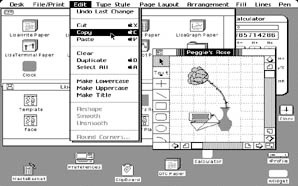
The original Lisa interface was less reliant on the mouse; it used a “softkey” as it’s primary pointing device, which was essentially arrow keys on the keyboard. The demo gave those at Apple that were devoted to a more dynamic GUI for the Lisa the proof they needed that the graphical desktop was the direction to head. Atkinson recalls that “mostly what we got was inspiration from the demo, and a bolstering of our convictions that a more graphical way to do things would make a business computer more accessible.” Jobs liked what PARC had done with the GUI so much that he convinced Larry Tesler to switch from PARC to Apple and help him develop the interface for the Lisa.
“They showed me three things. One of the things they showed me was object-oriented programming. Another one they showed me was a networked computer system … they had over a hundred Alto computers all networked using email etc. I didn’t even see that. I was so blinded by the first thing they showed me which was the graphical user interface. I thought it was the best thing I’d ever seen in my life. Now remember it was very flawed, what we saw was incomplete, they’d done a bunch of things wrong. But we didn’t know that at the time, but still though, the germ of the idea was there and they’d done it very well, Within you know, ten minutes, it was obvious to me that all computers would work like this some day.” Steve Jobs, Apple Computer , commenting on his visit to Xerox PARC.
The Apple Lisa did not sell well because, like the Xerox STAR, it was too expensive ($10,000) as compared to IBM PCs of the day. 1984‘s Macintosh was the first personal computer with a GUI to be marketed successfully because of it’s more reasonable price and well planned advertising strategy. At first the Mac did not sell as well as expected, because of it’s lack of software; MacPaint and MacWrite were not enough for businesses who needed spread sheets and accounting software.
The following segment is from an article in PCworld online in honor of the 20th anniversary of the Mac.
Remembering 1984
But the Macintosh marketing memories[2] begin for most of the pioneers with the “1984” ad that played during the Super Bowl the week of the Macintosh’s launch. Crafted by Hollywood director Ridley Scott, it was dramatic and artsy — and, as several of the principals recall, it almost didn’t run.
A preview of the ad was greeted with foot-stomping, whistling applause from the sales force at a fall meeting, several members of the original Macintosh marketing team say. But the Apple board of directors was much less impressed, and in fact ordered ad agency Chiat/Day to try to sell the Super Bowl advertising time spots. When the agency reported it couldn’t unload the 60-second spot by the deadline, Apple’s board suggested swapping in an Apple II advertisement–but none was suitable. So the board acquiesced, the spot ran–and the Mac made its mark on the advertising field as well as on the technology world. Today, the Super Bowl is often the showcase for innovative advertisements.
“At the next board meeting two weeks later, they summoned the senior members of the Macintosh team,” [Mike] Murray says. “We went into the board room, and they all stood up and applauded.” Although broadcast just once, the ad is still a marketing message for Apple. It was eventually preloaded on some Apple systems and is available for download.
Movie 16.2 Apple’s famous “1984” Macintosh ad
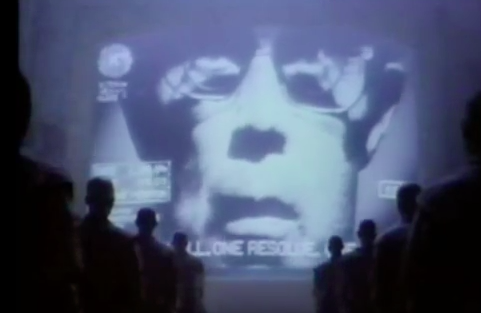
The “1984” commercial introduced the Apple Macintosh. It was conceived by Chiat/Day, and directed by Ridley Scott.
https://www.youtube.com/watch?v=2zfqw8nhUwA

At the 2004 MacWorld, Steve Jobs presented the 1984 ad again as part of his keynote speech. In this version, the hammer-wielding female was outfitted with an Apple t-shirt and an iPod. The remade ad can be seen by clicking here.

The hammer throwing athlete/actress is Anya Major, who also appeared as the Russian border guard in Elton John’s music video Nikita.
Movie 16.3 Nikita – excerpt
The following description of the Apple/PC developments is from the introductory chapter of a 1994 Masters thesis written by Lionel A. Smith (http://lionels.orpheusweb.co.uk):
Hewlett-Packard minicomputer electronics engineer and programmer, Steve Wozniak, had developed an interest in microcomputers through the Homebrew Computer Club. Wozniak, whose real forte was simplifying circuits by making components fulfill more than one function, proceeded to design a small computer with video-terminal capability around the Mostek 6502 microprocessor (because at $25 it was the only one he could afford).
Electronics engineer, and entrepreneur Steve Jobs, the son of a salesman, had, while working for Atari, engaged the talents of Wozniak in hardwiring the video game Breakout. Wozniak reduced the chip count to 44 (when normal chip counts for this type of game were 150-170).The design was too complex for Atari engineers to understand and a pre-production redesign was required. Wozniak’s talent for minimalist design was a vital factor in product commercial viability by keeping construction costs down.
Demonstrations of Wozniak’s microcomputer at the Homebrew Club quickly led to firm orders for production machines. Hewlett-Packard, having declined an interest in the microcomputer designed by their employee, gave Wozniak a legal release, opening the way for the formation of Apple Computer and sales of the Apple I.
Soon Jobs and Wozniak realized that what the world wanted was a personal computer that only required connecting to a domestic TV to be made ready for use, so Wozniak designed a successor.
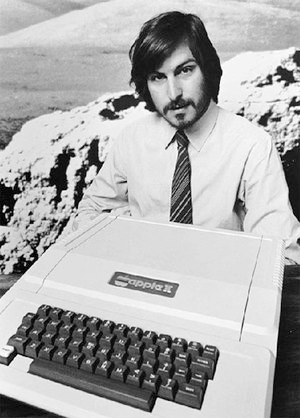
The Apple II, also based on the Mostek 6502 microprocessor, scored immediate success with its color graphics and use of discs for data and program storage. The operating system, also supplied on disc, required loading into RAM during startup. Sales of this machine accelerated fast enough for third parties to become interested in developing hardware expansions and software.
The spreadsheet, as an aid to financial planning and what-if analysis was the concept of Dan Bricklin who first produced a demonstration version written in BASIC on an Apple II. It was with this demonstration that the use of the slash character to initiate a command first appeared, which became such a familiar feature of spreadsheet software including Lotus 1.2.3. Bricklin teamed up with Bob Frankston and created the Software Arts company to produce the full assembly language version, VisiCalc. The combination of VisiCalc and a disc system was so successful that many Apple IIs were sold into the business community, enhancing Apple’s credibility. Indeed, IBM held up the announcement of the IBM PC until a VisiCalc conversion was ready.
Thus, in the early nineteen-eighties, there were two de-facto standards for personal computers; the S-100 bus–CP/M camp and the Apple following. There were many other proprietary machine architectures, each with a unique combination of microprocessor, bus, memory architecture and file system formats, and transfer of data between formats was all but impossible.
When the IBM Personal Computer (PC) was introduced in August 1981, little did the world suspect that a standard was being set, a standard which would continue to make its existence strongly felt as far into the future as 1994, and possibly beyond.
IBM brought their first PC to market in a little over thirteen months from inception. This was remarkable for a company whose project gestation period was usually measured in years. A major factor in the short development time was that IBM had taken the unprecedented step, for an industry giant noted for developing products which were proprietary through and through, of using existing hardware components from external vendors. The use of many design elements of IBM’s earlier System/23 DataMaster was also a major factor in the speed of development and expansion cards for this system could be used in the new machine.
More remarkable was the adoption of an operating system from the relatively small Microsoft company, who also supplied a BASIC language interpreter. IBM also offered CP/M-86, a 16-bit version of the 8-bit CP/M from Gary Kildall’s Digital Research. The first DOS was 86-DOS for S-100 computers upgraded with the Intel 8086 CPU. DOS-86 was produced by Seattle Computer Products, the rights of which were bought by Microsoft.
The well thought out synthesis of the best features from existing microcomputers and the close compatibility with CP/M systems ensured marketing success beyond even IBM’s expectation. The non-proprietary nature of the PC system architecture encouraged many other manufactures to begin building compatibles. This development had far-reaching consequences for the way in which the personal computer industry developed.
Although the 8088 microprocessor operates at 16-bits internally, it communicates with other components of the PC over an 8-bit bus. The advantage of this design strategy was that DataMaster features and 8-bit logic chips, which were plentiful and cheap, could be used.
Accessing memory over an 8-bit bus caused a bottleneck. In 1983 IBM introduce the PC/XT which was also built around the 8-bit Intel 8088 microprocessor. The PC/XT used version 2.0 of PCDOS, which for the first time used a hierarchical filing system capable of dealing with the much larger capacity hard discs with which the XT could be equipped.
Meanwhile Apple had embarked on a new project, code named Lisa, to develop a new office computer. In search of funds, Apple’s Steve Jobs approached Xerox, whereupon he and other members of the Lisa team visited Xerox’s Palo Alto Research Center (PARC), where they were shown the Alto. The Apple team was so impressed with the Alto’s sharp graphics, displaying a virtual desktop complete with usable documents and small on screen pictures called icons, they decided that the Lisa would be the Alto for the masses.The Apple team’s enthusiasm and ideas so impressed Larry Tesler, a member of the Alto’s design team that he joined Apple.
High resolution graphics demand fast microprocessors and ample RAM, both very expensive commodities in 1983, the resultant high unit price was the major factor in the Lisa’s commercial failure. Undeterred, the Apple team carried on with development and launched a scaled down version in 1984 under the name Macintosh, based on the Motorola 68000 microprocessor.
The Macintosh with its WIMP based GUI and its lack of program modality was a revelation to a world used to a command line, or at best menu driven interface. The Macintosh was to have a profound effect on the future development of personal computers. The Mac, as it became known, with its GUI-fronted operating system was presumably what Byte’s Editor in Chief had in mind when he wrote:
“I’d buy an operating system any day that takes a long time to run a given program but which makes me more productive by communicating with me in useful ways.” (Morgan, 1981).
In 1984 IBM introduced the IBM PC/AT built around the new Intel 80286 16-bit microprocessor. The 80286 apart from being capable of faster throughput than previous models offered some advanced features. Amongst these were processing parallelism and hardware implemented task switching with program protection.
Unfortunately in maintaining backward compatibility with version 2, the new 3.0 version of PCDOS did not support either multitasking or multiuser environments. Thus, the AT was primarily used as a more efficient PC/XT and could still only make use of a maximum of 640k of user memory in ‘real address mode’. Users wishing to take advantage of the possible 16 megabytes of memory, as well as the multitasking and multiuser capability were expected to wait for the forthcoming XENIX operating system.
A major architectural feature of the original PC was the use of an expansion bus equipped with connectors, or slots, to take adaptor cards for interfacing with peripherals in particular visual display units (VDUs) and hard drives. The expansion slot data width is one factor which determines how quickly data flows between the microprocessor and the peripheral. The original PC slots had an 8-bits wide data path increased to 16-bits on the AT to match the data width of the 80286. Both the 8-bit and the 16-bit bus specifications are known as the ISA.
Compatible makers continued to build enhanced versions of the PC for sale at competitive prices, introducing all manner of compatibility issues as a result. IBM when developing a 32-bit bus to suite the new 32-bit Intel 80386, and realizing that they had lost control of their architecture, produced MCA. MCA used many proprietary methods and components with which IBM hoped to defeat the compatible makers. The first systems with MCA were the PS/2 range, launched in 1987, this included models built around the 80386, 80286 and 8086. PC compatible manufacturers were allowed to use MCA architecture providing they paid IBM substantial royalties.
To avoid paying such royalties, a consortium of compatible makers, led by Compaq, responded by developing the 32-bit EISA bus which, apart from being faster and cheaper to implement, had the added advantage of maintaining compatibility with existing 8MHz ISA bus adaptors.
The launch of the Macintosh had focused the computer world’s attention on the user interface and where Apple led many were soon to follow. Digital Research produced GEM which could run under CP/M-86 or TOS on the Atari ST, and Microsoft produced Windows for the PC, both of which incurred Apple’s wrath for being to close to the look and feel of the Mac interface, Commodore having bought out a small company Amiga, launched a computer of that name using Intuition, as a GUI.
IBM with Microsoft produced a new 16-bit operating system OS/2 for the PS/2 range. OS/2 was designed to give a GUI, Presentation Manager, a head start by clearing away the 640k memory limitations of MS-Dos. Meanwhile the Unix camp were evolving their own many flavors of GUI such as Motif, DEC-windows, Open Look, Open Desktop and NextStep. Nextstep is the user interface developed to run under Unix on the Next Computer, the product Steve Jobs nurtured sometime after leaving Apple.
The move towards GUIs was generally welcomed by the computing fraternity, but there was one big drawback, especially for users of PC systems running MS-Dos. GUIs such as Windows, with their resolutions of 640 x 480 pixels or larger as opposed to the typical 24 lines of 80 characters, increased dramatically the amount of video traffic.
Furthermore, if ram is limited, large volumes of data need to be swapped out to disc frequently. When this is achieved over the 8Mhz ISA bus then systems can become sluggish and unresponsive, no matter how fast and capable the microprocessor.
With the introduction of the fast 80486 CPU, overcoming the ISA bus bottleneck became a high priority, especially where graphics adaptors and Windows, SCSI interfaces often used by CD-ROMS and scanners and hard drives were concerned. One answer appeared in the concept of the local bus, with which peripherals are connected directly to the CPU and/or ram. A number of manufacturers, including Compaq, Dell and Hewlett-Packard developed their own proprietary local bus systems which, although technically adequate, restricted adaptor choice to specifically designed cards.
The first widely adopted local bus standard was the 32-bit VESA local bus, (VLB or VL bus). This bus could be driven as fast as the clock of a 33Mhz processor, higher speeds requiring the implementation of wait states. The VLB has a maximum rated throughput of 128-132 Mbs compared to the ISA bus maximum of 8Mbs. VESA is a voluntary standard which some manufacturers have only partially implemented and it is in the process of being updated to cope with the 64-bit wide data path of the Pentium CPU.
PCI is an Intel initiated local bus standard which has been slow to gain wide acceptance because of its late introduction. With the increasing numbers of Pentium based systems PCI is becoming more widely accepted.
Many of these more recent bus technologies overcome the DMA and IRQ configuration troubles which continue to dog the majority of systems which still use the ISA bus. Many of these problems will not disappear until Windows dispenses with the services of the archaic DOS operating system:
“The 640KB of RAM that once seemed so luxurious is now choked with contentious device drivers and TSR programs. IRQs (interrupt requests), DMA channels, I/O memory ports, and other system resources are now being fought over like the last pebbles of ore in a played-out gold mine”. (Halfhill, 1994)[3]
Adaptor card timing problems can also cause much slot swapping and a rapidly growing collection of mutually exclusive cards. The Apple Macintosh and the Acorn 32-bit RISC computers do not suffer from any such problems: the systems were designed from the ground-up with a more efficient and extensible combined operating system and GUI.
The Computer History Museum has an excellent tribute to Steve Jobs and Apple, including this rare 1980 footage in which he describes the early days of the company.
http://www.computerhistory.org/highlights/stevejobs/video/
Steve Jobs talks about NeXT (1987)
http://www.youtube.com/watch?v=WHsHKzYOV2E
In 1984, Steve Jobs contributed an essay that originally appeared on page 135 of the first issue of Macworld.
The people who are doing the work are the moving force behind the Macintosh. My job is to create a space for them, to clear out the rest of the organization and keep it at bay. I can’t spend enough time here, unfortunately, because I have other responsibilities. But every spare moment I have, I dash back because this is the most fun place in the world.
This is the neatest group of people I’ve ever worked with. They’re all exceptionally bright, but more importantly they share a quality about the way they look at life, which is that the journey is the reward. They really want to see this product out in the world. It’s more important than their personal lives right now.
The Apple II had a magical feel about it. You couldn’t quantify it, but you could tell. The Macintosh is the second thing in my life that’s ever felt that way. Opportunities like this don’t come along very often. You know somehow that it’s the start of something great. So everyone wants it to be perfect and works really hard on it. Everyone feels a personal responsibility for the product.
The Macintosh is the future of Apple Computer. And it’s being done by a bunch of people who are incredibly talented but who in most organizations would be working three levels below the impact of the decisions they’re making in the organization. It’s one of those things that you know won’t last forever. The group might stay together maybe for one more iteration of the product, and then they’ll go their separate ways. For a very special moment, all of us have come together to make this new product. We feel this may be the best thing we’ll ever do with our lives.
Movie 16.4 Steve Jobs Introduces Macintosh
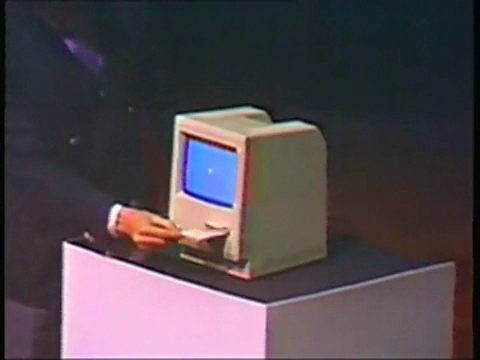
Movie 16.5 Gates and Jobs together
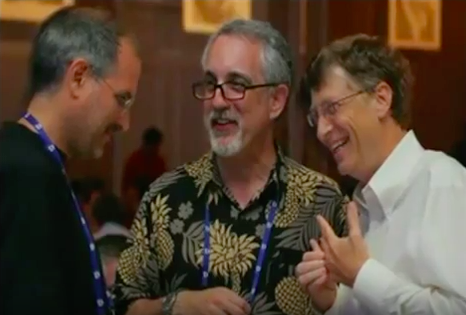
Bill Gates and Steve Jobs appeared on stage together at the D5 All Things Digital event in 2007.
https://www.youtube.com/watch?v=P_5xhcpoeoM
This sequence is the opening video of the discussion, which can be seen in its full (1 hour and 30 minutes) entirety at
http://www.youtube.com/watch?v=ZWaX1g_2SSQ
Movie 16.6 Gates/Jobs Rivalry
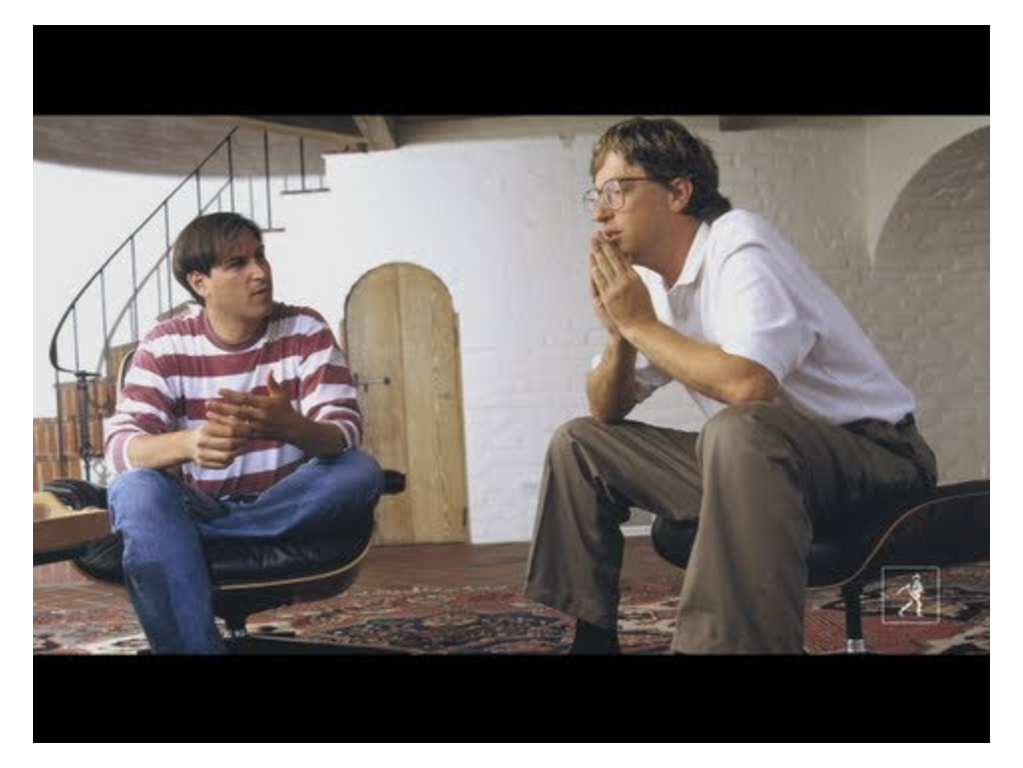
Steve Jobs Biographer Walter Isaacson chronicles the tumultuous relationship between the two tech giants dating back to the 1970s.
https://www.youtube.com/watch?v=1Bk-qTzN7vE
The first Macintosh had no network capabilities, and when asked about it, Steve Jobs reportedly threw a floppy disc at a journalist, saying “Here’s my network”.
- Triumph of the Nerds (PBS Transcripts, Part III - http://www.pbs.org/nerds/part3.html ↵
- The Computer History Museum hosted a panel session in 2004, telling the true story of the early Macintosh marketing. The following text describes the panel session introduction. The entire 2 hour session can be viewed at https://www.youtube.com/watch?v=JTVDWGtf9m4
"It was the autumn of 1983. Business Week magazine had an IBM personal computer on its cover, with the ominous words, And the winner is...IBM. Apple Computer was in a world of hurt. The Apple II had lost its competitive edge. The Apple III was a sales disappointment and the Lisa, introduced in January 1983, was a financial failure. Great expectations were being placed on the Macintosh, scheduled to launch on January 24, 1984. Yet there was skepticism both in and outside the company. There was no hard disk support. The screen was too small and it wasn't in color. There was limited software. Yet many believed that the Macintosh was indeed The computer for the rest of us. The engineers knew it. The software guys knew it. And most of all Steve Jobs knew it. The challenge for the Mac Marketing Team was simple: They had to establish and hold a beachhead. Or else they and the product would die. The introduction of the Macintosh computer launched a comprehensive and integrated approach to high-tech marketing. Much of what was highly innovative in 1984 is now standard fare for all product introductions." ↵
- Halfhill, Tom R. Apple's Technology Milestones, Byte Magazine, December 1994, pp 52-60. ↵
